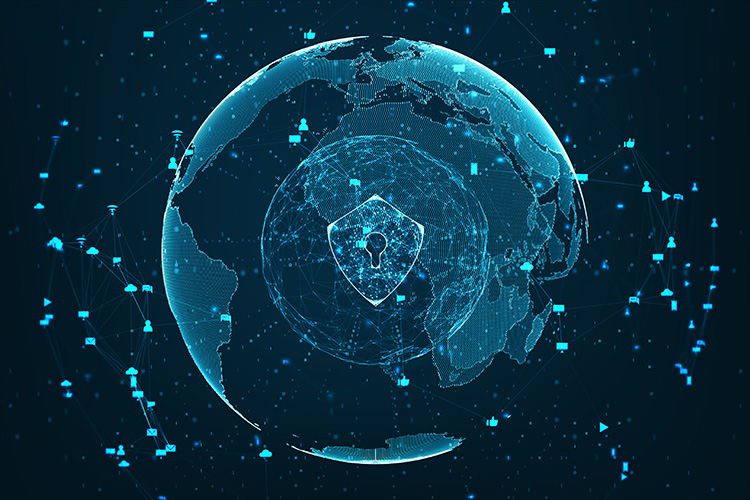The cybersecurity world does not operate on a 9-to-5 schedule. Threat actors know when you’re most vulnerable, and they exploit those windows: weekends, holidays, midnight deployments. The relentless pace has become the status quo, and defenders are expected to urgently respond to a seemingly endless deluge of alerts and incidents.
For many security professionals, this job has become a constant game of whack-a-mole. A new CVE is published. Security teams scramble to triage exposure, shut down affected systems, or deploy rushed workarounds. A patch arrives. Teams scramble again to test and roll it out, praying it doesn’t break anything in production. Then they rinse and repeat when another vulnerability drops.
This leads to constantly playing from behind and always working in panic mode. Not to mention, this process does not account for zero-days, which can be actively exploited before defenders even know about them. Or shadow IT, which introduces risk through systems no one even realizes are in play. Defenders need a strategy to get out in front of all the chaos and start playing from ahead.
By The Numbers
This issue is only getting worse as the skills gap grows and generative AI gives more attackers access to the tools they need to build and execute exploits. Two thirds of cybersecurity professionals say their job has become more stressful over the last five years and the exact same number cite AI as the direct cause of their burnout and stress.
74% of cybersecurity professionals have taken time off due to work-related mental well-being problems, and 90% of CISOs are concerned about the impact of stress, fatigue, and burnout on their workforce’s well-being. If you talk directly to the security community, 50 percent of security professionals say they expect to experience burnout in the next 12 months.
Meanwhile, the folks who do stick around in cybersecurity have to work in an area that is chronically undermanned. 90 percent of organizations report that they do face issues with skill shortages, and 58 percent worry that it puts their organization at significant risk. With fewer people doing more work, mental health and security are both on the line.
Perfection is a Myth
To make matters worse, defenders are often asked to maintain a level of security that is philosophically and logistically impossible. Perfect security doesn’t exist. Breaches will continue to happen and attackers will continue to evolve. The idea that your team can prevent every incident if they work hard enough is a recipe for stress and overwork, and it’s frankly just not a practical security strategy.
This pressure gets amplified by a persistent disconnect between security teams and executive leadership. The two groups often use the same words to mean different things. To a CISO, the word “security” means a posture of managed risk, while to a board member, it might mean complete protection. This mismatch leads to unrealistic expectations and misaligned priorities. Security teams are asked to deliver absolutes in a world run by probabilities and institutional hope.
Resilience Over Security
The first shift that needs to happen is a mindset shift: from security to resilience. Resilience means acknowledging that breaches are not always preventable, but the blast radius can be minimized.
A perfect perimeter might sound like a solid strategy, but in practice, it puts too much pressure on the people behind the controls. If everything depends on keeping attackers out, then defenders are left to play hero every time something slips through. That’s not sustainable. It’s much more practical to use a layered approach that includes application-level defenses built to identify and neutralize threats automatically. Embedding autonomous runtime security within your applications is one of the clearest ways to implement this.
With defense-in-depth, protection doesn’t end at the edge. These controls live inside your applications, ready to act the moment something goes wrong. They operate independently and immutably, so even if an attacker slips in while you’re offline, be it Christmas Day, during a long weekend, or overnight, there’s no need to jump into incident response mode. The exploit is neutralized in real time, and when you return, a full report is waiting for you. That’s what resilience looks like in action. It’s about having systems in place that work even when you’re not on call.
What You Can Do Right Now
- Normalize a New Team Vocabulary
Inside your security team, reinforce the concept that their job is resilience, not perfection. Groupthink and panic can spread fast in incident response. Encourage calm, clear thinking, and redefine success as containing risk, not erasing it entirely. - Automate More, Burn Less
There is no future in which defenders have fewer alerts or responsibilities. Whichever parts of the security system can be automated, should be. Automation doesn’t just reduce workload. It protects your team’s time and energy so they can focus on strategy, not just survival. - Take Care of the Human
Security work is noble, but it cannot come at the cost of your mental health. Consider therapy and time off if you feel like you are approaching burnout. This should be normalized across every team. - Reconsider the Role If You Need To
This job isn’t for everyone. If you’re craving a more winnable mission, there is no shame in stepping away. Your skills translate well across product security, governance, privacy, risk management, and adjacent fields. You’re allowed to want a healthier life.
Security Is Sustainable When it Sustains Its People
Any team is more likely to accomplish its goals if it ensures its people are happy and prospering. Burnout is not a personal failure. It is a system-level issue. If your team is breaking down, then so is your strategy.
This field is not going to slow down. Threats always evolve and attack surfaces always expand. We cannot slow this process, but we can change how we prepare, respond, and support each other through it.
The goal is not flawless protection. The goal is a sustainable system, built to withstand pressure without grinding down the humans behind it. That is how we build teams that last.




